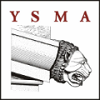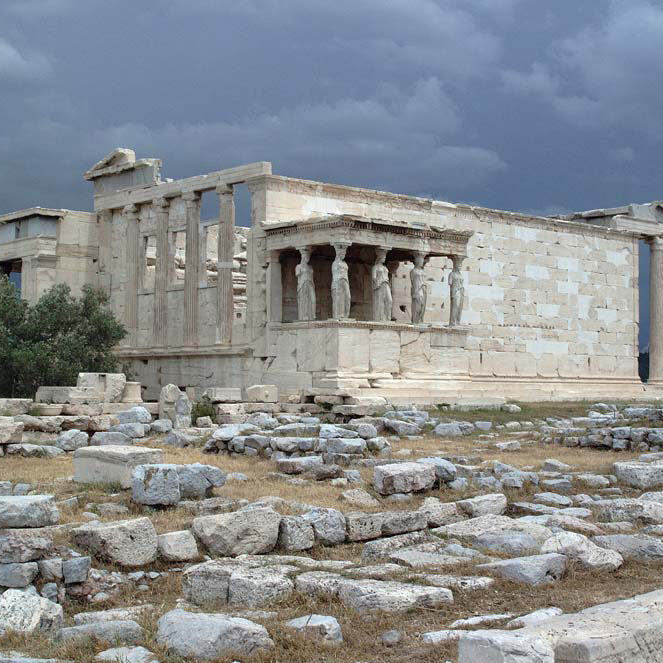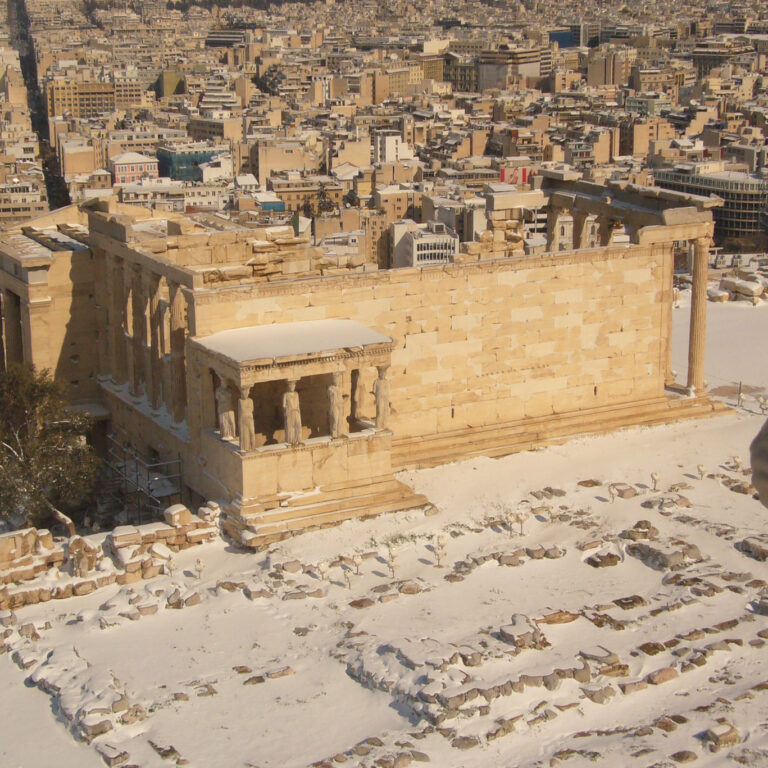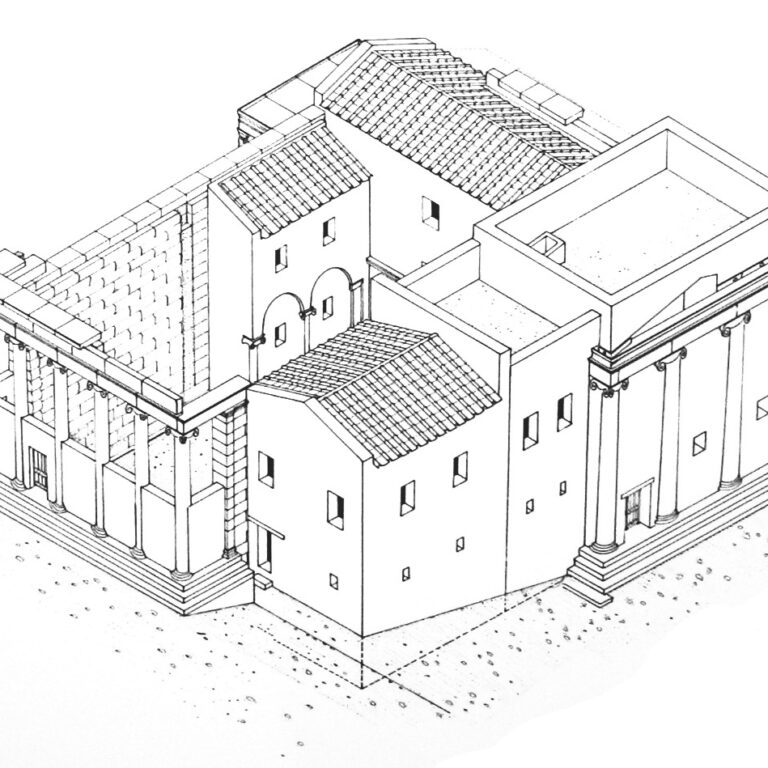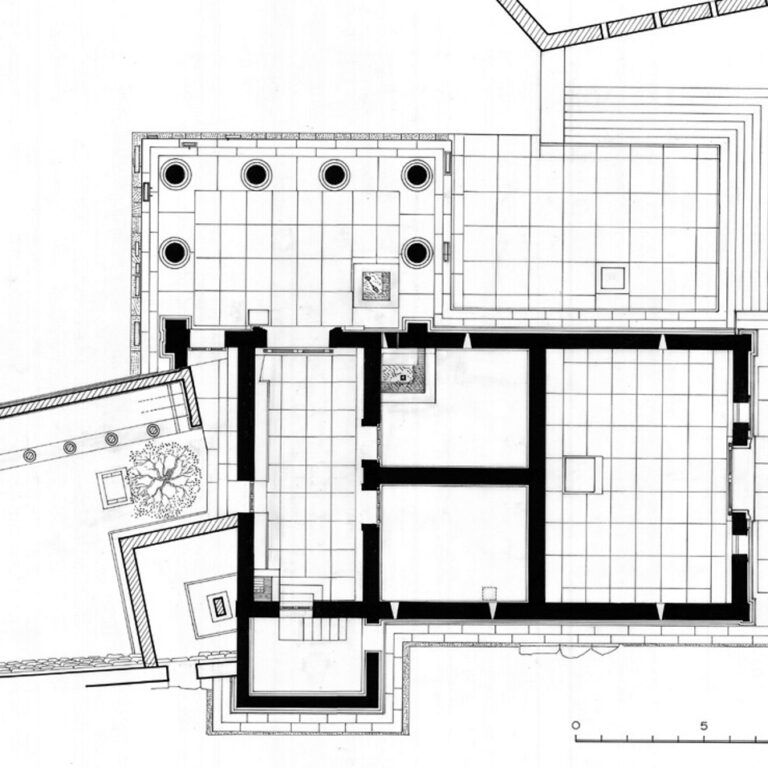
The Erechtheion, a temple of the Ionic order built between 421 and 406 B.C., was dedicated to both Athena and Poseidon. Its unique architectural plan and the richness of its sculptural decoration have given the temple a prominent position in the history of ancient Greek architecture. The east part of the temple, behind the hexastyle Ionic porch, was sacred to the cult of Athena Polias. It is here where the cult statue (xoanon) of the goddess, the focus of the Panathenaic Festival, was kept.
The west part of the building, particularly dedicated to Poseidon, housed also the cults of Hephaistos and the local hero Boutes. The west façade of the temple was a hexastyle Ionic colonnade on a podium. The north porch of the temple, with six Ionic columns arranged in the form of the Greek letter Π, was roofed with an excellently executed coffered ceiling. A magnificent doorway with a carved doorframe led from the north porch to the west section of the temple. The porch of the Caryatids at the southwest corner is an emblematic feature of the temple: six female figures support the ceiling of the south porch, retaining all their grace despite the weight of the overlying construction.
The Erechtheion underwent extensive repairs and reformation for the first time during the 1st century B.C., after its catastrophic burning by the Roman general Sulla. The building was altered decisively during the early Byzantine period, when it was transformed into a church. With this alteration many architectural features of the ancient construction were lost, so that our knowledge of the interior arrangement of the building is limited. Among the significant points in the historical course of the Erechtheion are also its transformation into the palace of the bishopric during the Frankish domination and subsequently, during the Ottoman occupation, into a dwelling for the harem of the Turkish commander of the garrison.
The serious catastrophes suffered by the monument include its plundering by Lord Elgin, whose cohorts made off with the north column of the east porch together with the overlying section of the entablature and one of the Caryatids. The monument suffered severe damage also during the War of Independence, when the ceiling of the north porch was blown up and a large section of the lateral walls of the cella was dismantled.
The forming of the Greek state assured conditions necessary for launching restoration interventions on the Acropolis. Minor interventions were carried out on the Erechtheion in the middle of the 19th century. The form of the building as we know it today, however, is due largely to the extensive restoration performed by N. Balanos between the years 1902 and 1909, in which much of the ancient building was restored.
